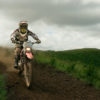Think about how often baseball players analyze their batting swing. It’s probably an endless process. Your draw sequence is the same, it takes time and repetition. But, perfecting your concealed carry draw sequence can pay off big dividends.
The Four Parts of Your Draw Sequence
Your concealed draw sequence can be broken down into pretty much four distinct sections. Each of those sections contain quite a few individual movements, so it’s best to analyze the movements themselves each as they occur. Follow these steps to break down your draw sequence.
Taking your environment and your clothing into account is your first step. Be prepared for anything.
- Think about where your firearm will be located and ask yourself a few questions. Will you need to bend down to access an ankle holster or open a briefcase? Will you be wearing a coat in cold weather? Are items like a belt buckle or cell phone in the same path as your draw sequence?
- Practicing at the range from an open, easily accessible holster won’t do you much good if you’ll be needing to un-tuck a shirt or open a purse in a moment of crisis. Add in a coat or a bag to make your draw to complicate things. How do you handle these new additions?
Now you have located your concealed handgun and initiated a steady grip for the second step of your draw.
- Depending on the location of your weapon, you’ll want to either draw up or out with the muzzle facing down and your finger along the frame, not on the trigger.
- What is the position of your non-shooting hand? It should be located in the center of your body with the palm ready to accept the grip of the gun as you bring it up with your shooting hand. It’s also ready to provide any additional self-defense that might be necessary during the attack.
The weapon is presented and your stance is facing the attacker, as best you can of course. You move into the third step and bring your firearm into the best defensive position you can manage.
- What is the position of your knees and elbows? Try to maintain a relaxed but strong position with slightly bent knees and elbows. You should not be rigid but should be able to move as the attack requires. Your finger at this point is still not on the trigger unless you truly intend to fire.
Your arms are fully extended and you have the sights trained on the immediate threat.
- Maintain clear and slow breath as best as you can given the situation. Regulated breathing not only helps your accuracy but will help to keep you as calm as possible.
- You can’t realistically maintain this fully extended firing position for more than about 10 seconds. Your adrenaline will be pumping for sure, but maintaining a confident grip and muscle strength is essential.
As you can see, there is much more to a four-step draw sequence than you may think. Carrying concealed presents additional elements to consider. No threatening scenario will be the same and you could be required to fire from either standing, seated, or ground positions. You don’t wear the same clothing each day and may dress differently depending on the weather. Break down the steps of your concealed carry draw sequence in order to best practice them and address any problems.


